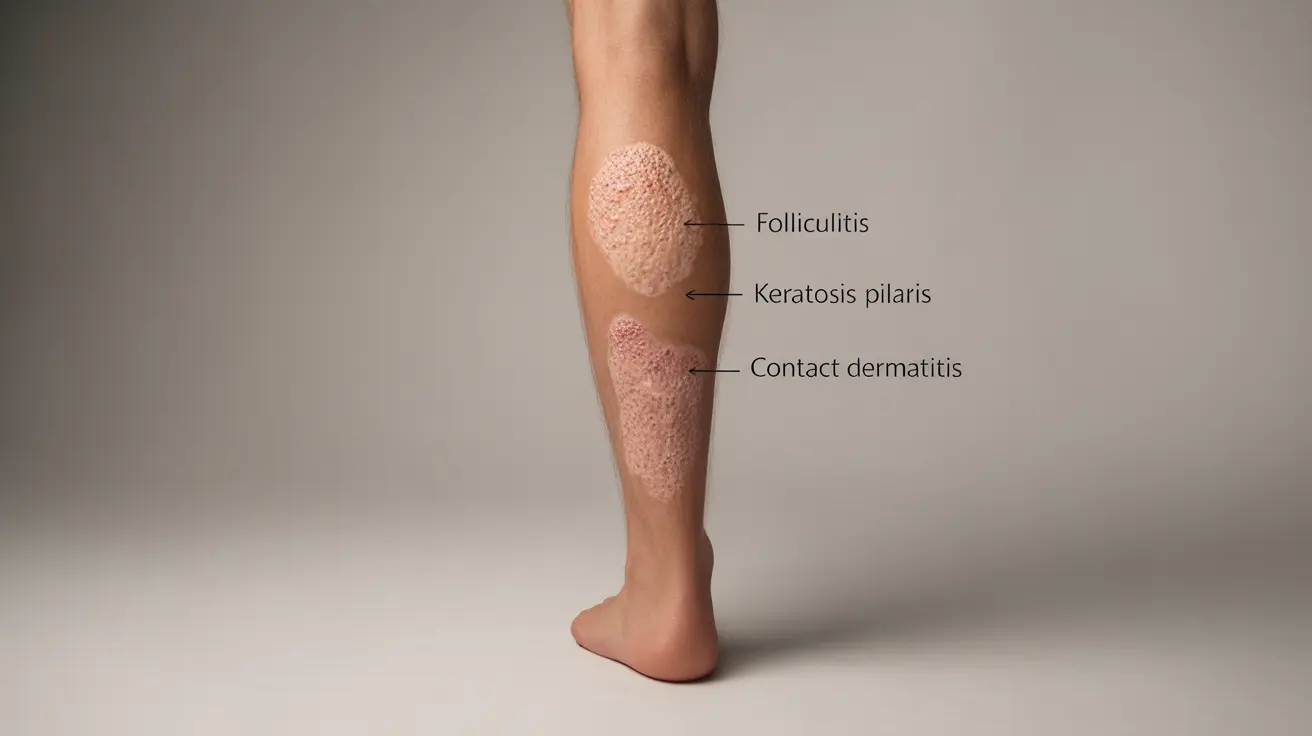Finding a pimple on your leg can be both uncomfortable and concerning. These skin blemishes, while common, can range from minor irritations to signs of more significant skin conditions. Understanding what causes leg pimples and knowing how to treat them effectively can help you maintain healthy, clear skin.
In this comprehensive guide, we'll explore the various causes of leg pimples, effective treatment options, and preventive measures to keep your legs smooth and blemish-free. We'll also help you identify when a leg pimple might require medical attention.
Common Causes of Leg Pimples
Leg pimples can develop for several different reasons, and identifying the cause is crucial for proper treatment:
Folliculitis
The most common cause of leg pimples is folliculitis, an inflammation of hair follicles often triggered by bacteria, friction, or blocked pores. This condition frequently occurs after shaving or when wearing tight clothing that rubs against the skin.
Keratosis Pilaris
This genetic condition causes small, rough bumps that resemble pimples, typically appearing on the thighs and upper arms. While harmless, it can be persistent and may require ongoing management.
Contact Dermatitis
Skin reactions to certain fabrics, detergents, or body products can cause pimple-like bumps on the legs. These reactions often come with itching and redness.
Treatment Options for Leg Pimples
Over-the-Counter Solutions
Several effective treatments are available without a prescription:
- Benzoyl peroxide wash or cream
- Salicylic acid products
- Tea tree oil-based treatments
- Gentle exfoliating scrubs
Home Care Methods
Simple home care practices can help resolve and prevent leg pimples:
- Warm compresses to reduce inflammation
- Regular gentle cleansing
- Wearing loose, breathable clothing
- Avoiding touching or picking at the affected areas
Prevention Strategies
Taking proactive steps can significantly reduce the occurrence of leg pimples:
Proper Hygiene Practices
- Shower after exercising
- Change out of wet or sweaty clothes promptly
- Use clean, sharp razors when shaving
- Moisturize regularly with non-comedogenic products
Clothing Considerations
Your choice of clothing can impact skin health. Opt for loose-fitting, breathable fabrics, especially during exercise or hot weather. Avoid wearing tight clothes for extended periods, particularly when sweating.
When to Seek Medical Help
While most leg pimples are harmless, certain symptoms warrant professional medical attention:
- Severe pain or swelling
- Spreading redness or warmth
- Fever or chills
- Pimples that don't heal within two weeks
- Signs of infection
Frequently Asked Questions
What are the common causes of pimples or bumps on the leg?
The most common causes include folliculitis (inflamed hair follicles), keratosis pilaris, contact dermatitis, and reactions to shaving or tight clothing. Bacterial infections and clogged pores can also lead to leg pimples.
How can I treat pimples on my legs at home using over-the-counter products?
Effective over-the-counter treatments include benzoyl peroxide products, salicylic acid cleansers, and tea tree oil preparations. Regular gentle exfoliation and keeping the area clean can also help resolve leg pimples.
When should I see a doctor about a pimple or bump on my leg?
Consult a healthcare provider if you experience severe pain, spreading redness, fever, or if the pimple doesn't improve after two weeks of home treatment. Also seek medical attention if you notice signs of infection or if the bumps are unusually large or numerous.
What precautions should I take to prevent pimples from appearing on my legs?
Maintain good hygiene, shower after exercise, use clean razors when shaving, wear breathable clothing, and keep your skin moisturized. Avoid touching or picking at existing bumps, and regularly clean items that come into contact with your legs.
Can wearing tight or sweaty clothing cause or worsen pimples on the legs?
Yes, tight or sweaty clothing can contribute to leg pimples by trapping moisture and bacteria against the skin, blocking pores, and creating friction. Change out of wet or sweaty clothes promptly and opt for loose-fitting, breathable fabrics when possible.




